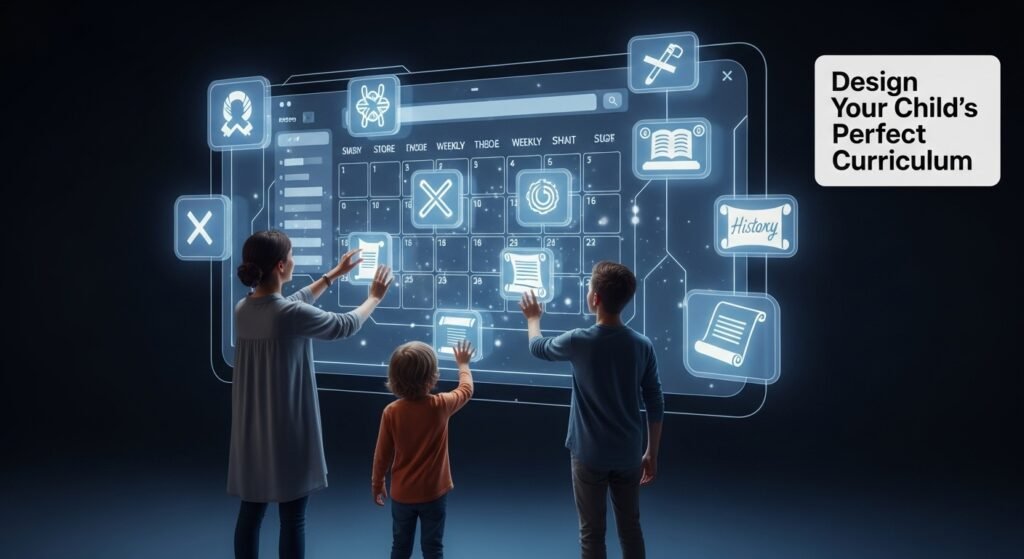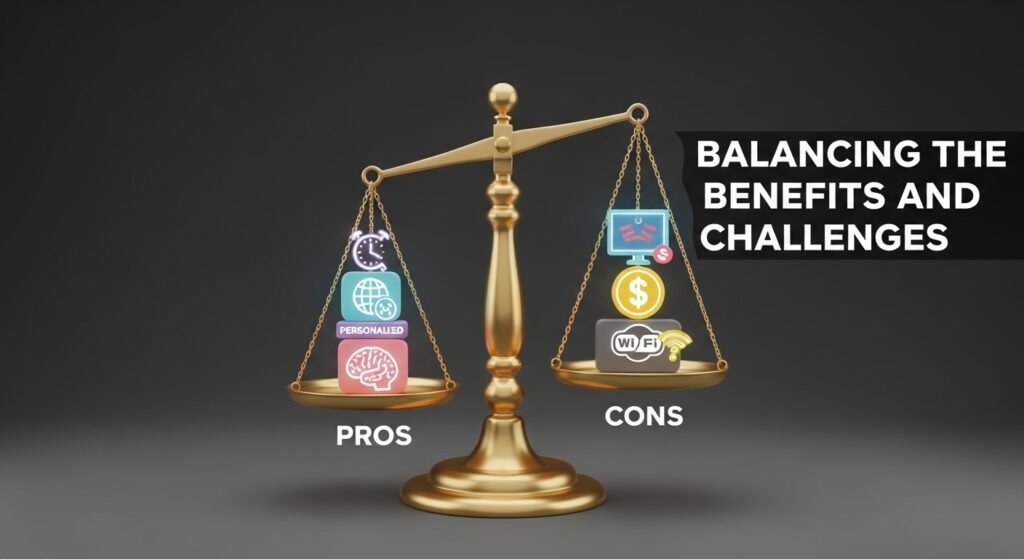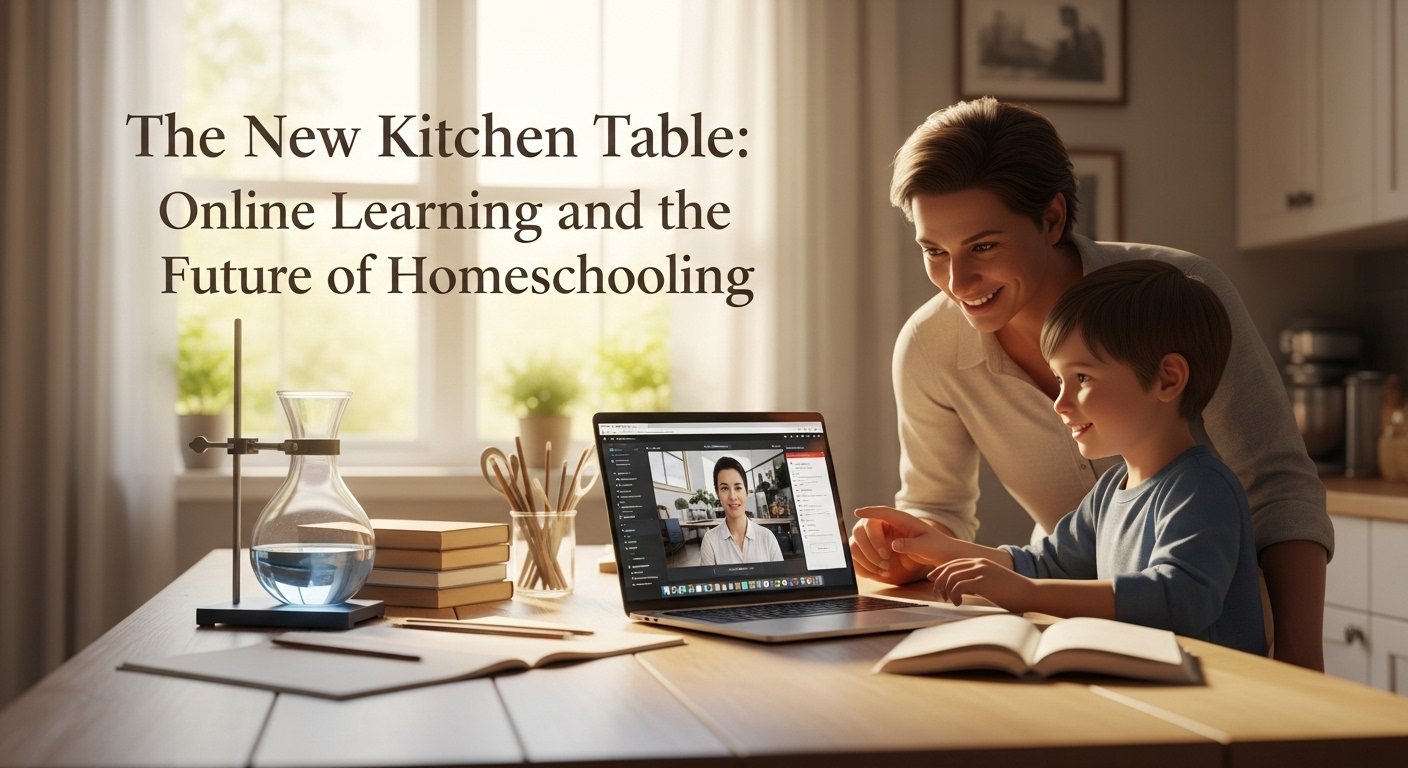The New Kitchen Table: Navigating the Pros and Cons of Online Learning in Homeschooling
Picture a homeschooling family from a decade ago. You’d likely imagine a kitchen table piled high with textbooks, workbooks, and flashcards—a self-contained, parent-led universe of learning. Now, picture that same table in 2025. The textbooks are still there, but they’re sitting next to a laptop logged into a live Mandarin class with a teacher in Taipei, a tablet displaying an interactive 3D model of a human heart, and a science experiment guided by a YouTube tutorial. This is the new face of homeschooling, and it’s powered by the incredible evolution of online learning.
The post-2020 era saw a seismic shift in education, and one of its most lasting legacies is the renaissance of homeschooling. What was once a niche choice has become a mainstream educational pathway for millions of US families. This explosion in popularity has been fueled almost entirely by the rich, diverse, and increasingly sophisticated world of online learning. However, this new digital frontier comes with its own unique set of opportunities and challenges. For families considering or currently navigating this journey, understanding the pros and cons of these trends is the key to designing an education that is truly the best of both worlds.
The Homeschooling Renaissance: More Than Just a Temporary Shift
The surge in homeschooling that began in 2020 wasn’t just a temporary blip. According to data from organizations like the National Home Education Research Institute (NHERI), the number of homeschooled students in the US has settled at a new, significantly higher baseline. Why? Because many families who were thrust into home-based education discovered something profound: the unparalleled ability to customize a child’s education.
This customisation is made possible by online learning. The old stereotype of the isolated homeschooler with limited resources has been shattered by a reality of global classrooms, expert-led courses, and adaptive technology. The modern homeschool is a hybrid ecosystem, blending parent-led instruction with a rich tapestry of digital resources.
The Old School vs. The New School: A Homeschooling Paradigm Shift
The very definition of what it means to homeschool has evolved. The new, tech-infused model offers possibilities that were once unimaginable.
| “Old School” Homeschooling (Pre-2010s) | “New School” Hybrid Homeschooling (2025) |
| Curriculum: Often a single, comprehensive “boxed” curriculum. | Curriculum: “A la carte” or eclectic; curated from various online and offline sources. |
| Instruction: Primarily parent-led. | Instruction: A blend of parent-led, expert-led (via live online classes), and AI-driven adaptive learning. |
| Pacing: Parent-controlled, but can be rigid within the curriculum. | Pacing: Highly flexible and often mastery-based, allowing students to speed up or slow down. |
| Access to Expertise: Limited to the parent’s knowledge and local co-ops. | Access to Expertise: Virtually unlimited; access to specialist teachers and tutors from around the world. |
| Socialisation: Reliant on in-person co-ops, sports, and local groups. | Socialisation: A mix of in-person activities and virtual clubs, classes, and communities. |
STEM Careers in Future of Work for Graduates
The Top Trends: How Online Learning is Shaping the Modern Homeschool
The integration of online learning isn’t just a minor tweak; it has created entirely new ways to approach homeschooling. Here are the biggest trends families are embracing in 2025.

Trend 1: The “A La Carte” Curriculum
Gone are the days of being locked into a single, expensive, one-size-fits-all curriculum. The modern homeschooling parent is an “educational curator.”
- The Approach: Families are piecing together a bespoke education for their child. They might use a tried-and-true textbook for math, but supplement it with a subscription to an adaptive online learning platform like Khan Academy. They might handle history themselves but enrol their child in a live, interactive online literature class to foster debate and discussion skills.
- The Benefit: This allows for the ultimate form of personalization, perfectly matching the resources to the child’s specific learning style, interests, and academic needs.
Trend 2: The Live Global Classroom
Perhaps the most significant evolution in online learning is the quality of live, synchronous classes.
- The Technology: Platforms like Outschool have matured, offering small, engaging classes taught by vetted experts on almost any topic imaginable. Your child in rural Texas can now join a weekly creative writing workshop with students from New York, London, and Sydney, all led by a published author.
- The Benefit: This shatters the old “socialisation” concern. It provides high-quality instruction in specialised subjects and exposes children to a diverse range of peers and perspectives, all from the comfort of home.
STEM Careers in Future of Work for Graduates

Trend 3: Gamification and Adaptive Learning
AI-powered educational tools have transformed the “drill and kill” practice of the past into an engaging and effective experience.
- The Experience: Imagine a math program that plays like a video game, with students earning points and unlocking new levels as they master concepts. The AI algorithm subtly adjusts the difficulty in real-time, ensuring the student is always in the “zone of proximal development”—challenged but not overwhelmed.
- The Benefit: This form of online learning is incredibly motivating and highly efficient. It provides instant feedback and allows students to achieve mastery at their own pace, which is particularly powerful for subjects that require a lot of practice.
Top 10 Online Learning Platforms in 2025 for Students

The Pros and Cons for Families: A Balanced View
This new world of tech-infused homeschooling offers incredible opportunities, but it also comes with a unique set of challenges that families must navigate.
The Pros (The Upside of the Trend)
- Unmatched Flexibility and Personalization: This is the number one advantage. A child who is passionate about marine biology can dedicate a huge portion of their time to that subject, moving at a speed that a traditional classroom could never accommodate.
- Access to World-Class Expertise: You no longer have to be an expert in every subject. Online learning allows you to outsource advanced subjects like physics, coding, or a foreign language to a qualified expert, levelling the playing field.
- Preparation for the Future: Students in this environment become highly proficient in independent research, time management, and digital literacy. They are, in essence, being trained for the flexible, remote-friendly future of work.
- Catering to Different Learning Styles: Whether your child is a visual, auditory, or kinesthetic learner, there is an online resource tailored to their needs, from video lectures and podcasts to interactive simulations.
The Cons (The Challenges to Consider)
- The Parent as “IT Director”: Managing multiple online platforms, tracking logins and passwords, troubleshooting tech issues, and ensuring your child stays on task can become a significant, often frustrating, part of the parent’s role.
- The Cost Can Add Up: While there are many fantastic free resources, subscriptions to multiple high-quality online learning platforms, live classes, and software can become a significant financial investment.
- The Screen Time Dilemma: This is a major concern for most parents. A heavy reliance on online learning requires a very conscious and intentional effort to balance screen time with hands-on projects, outdoor play, and face-to-face social interaction.
- The Paradox of Choice: The sheer volume of online resources can be overwhelming. It takes a significant amount of time and research for parents to vet platforms and design a cohesive, high-quality curriculum.
A Personal Story: Our Family’s “A La Carte” Journey
When my wife and I started homeschooling our two children, we quickly realized a one-size-fits-all approach wouldn’t work. Our son, “Leo,” is a math and science whiz who devours information and is always ready for the next challenge. Our daughter, “Clara,” is a budding artist and storyteller who finds traditional, structured writing assignments to be a chore.
The traditional boxed curriculum we started with left Leo bored and Clara frustrated. So, we switched to an “a la carte” model powered by online learning. For Leo, we found an advanced, self-paced online physics course that let him soar ahead. For Clara, we enrolled her in a live, project-based online class called “Writing Graphic Novels,” where her passion for art could fuel her development as a writer.
It wasn’t easy. There were days of tech glitches and subscription management headaches. But the result was two children who were genuinely excited about their education. We were no longer forcing them to fit a curriculum; we were building a curriculum to fit them.

Conclusion: The Parent as Educational Curator
The integration of online learning has forever changed the landscape of homeschooling, transforming it from a simple alternative into a deeply customizable and powerful educational pathway. It’s not a perfect solution, and it demands a new level of engagement from parents—a shift from being the sole teacher to being a thoughtful “educational curator” and facilitator.
This path is not without its challenges, requiring a careful balance of digital and real-world experiences. But for families willing to embrace this new role, the opportunity is immense: the chance to design an education that is as dynamic, unique, and full of potential as your own child.
For homeschooling families: what is your favourite online learning resource? For those considering it: what is the biggest pro or con on your mind? Share your experiences and questions in the comments below!



